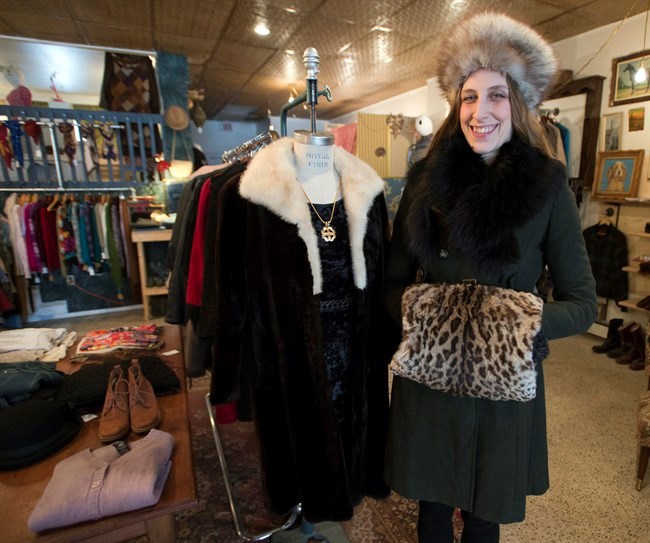MONTREAL - It can be difficult to walk a city block in Montreal these days without coming across a coyote, lynx, fox or raccoon.
Fur seems to be everywhere, as vintage coats get rejigged into stylish hats or even ear muffs and brand name jackets feature it on their collars.
The renewed popularity may be welcome among manufacturers and fashion lovers, but it has some animal rights activists concerned.
"This is something we've noticed that we take very seriously," Thurston Sayara of the Humane Society said of the craze for fur accessories.
People aren't always aware their parkas or hats are outfitted with real fur, she said, or may believe it comes from the scraps of animals already used to make coats.
"They don't realize that most animals are killed for it," she said.
Still, what was once most common among the affluent and the elderly has caught on with a young, hip crowd. This winter, collars, hats and other fur accessories flew from the shelves as soon as the first snow flakes fell.
Stephanie Bingham, co-owner of the Montreal shop La Founderie, said the fur revival began five or six years ago and has really taken off in the last two.
The rise in popularity is hard to explain, Bingham said, but the fact that many people are using vintage fur eliminates the ethical problem.
"I think it's easier to incorporate a little bit of fur in your wardrobe rather than wearing a full coat," Bingham said.
Sayara said the Humane Society considers the fur industry "particularly cruel" because it sells a luxury product that is no longer necessary, since artificial replacements are just as hot on the market.
For its part, the fur industry argues it plays a roll in controlling the population of some species.
Alan Herscovici of the Fur Council of Canada said the coyote, whose fur is often used to decorate caps, is superfluous in some parts of the country, to the point that it causes problems for livestock producers.
"There are some who do not like the idea that we're going to trap or hunt," he said, but "we need to make a certain amount of trappings to keep a balance with wildlife populations and nature in the ecosystem. "
The vast majority of fur comes from fur farms, however.
Teresa Eloy, also with the Fur Council, argues that animals at fur farms have to be treated well in order for their fur to be beautiful and lush.
These arguments don't convince Danielle Katz of the animal rights group People for the Ethical Treatment of Animals. She argues animals suffer and emphasizes that many celebrities refuse to wear fur for ethical reasons, hoping that their young fans will follow suit.
Many clients, however, are more concerned with appearance than where the fur comes from, Bingham said.
Noemie Archambault, a 20-year-old wearing a coat with a fur-lined hood at a bus stop, said she didn't even check whether it was real before buying it. Turns out it's made with raccoon fur.
"It definitely bothers me, but at the same time it's good quality and it will stay nice for a long time and it's warm," she said.



